Vienna occupies a worthy place in the galaxy of brilliant European capitals. From its very foundation in ancient times, the city experienced several architectural upsurges, but it began to turn into a real masterpiece after the accession of the Habsburg dynasty in the 13th century.
Vienna is associated with the life and work of the musical geniuses Mozart, Schubert, Haydn. Here are the magnificent palaces of the Austrian emperors, the bells of majestic cathedrals ring, real court balls take place.
For tourists, the capital of Austria is attractive all year round. In between sightseeing, they sit in cozy Viennese coffee houses, tasting delicious Austrian sausages, enjoying fresh pastries from pastry shops on Kärntnerstrasse. And in the evenings they arrange promenades in the parks and admire the illumination of the Danube promenades.
What to see and where to go in Vienna?
The most interesting and beautiful places for walking. Photos and a short description.
- Hofburg Palace
- Schönbrunn
- Gazebo
- Vienna Opera
- Vienna Philharmonic
- Burgtheater
- Vienna City Hall
- Austrian parliament building
- Liechtenstein Palace
- Liechtenstein Castle
- Kreuzenstein Castle
- St. Stephen's Cathedral
- Church Karlskirche
- Church Votivkirche
- St. Peter's Church
- Mozart House Museum
- Albertina Gallery
- Sigmund Freud Museum
- Kunsthistorisches Museum and Natural History Museum
- Leopold Museum
- Danube tower
- Tower of lunatics
- Hundertwasser House
- Vienna Woods
- Vienna city park
- Ringstrasse street
- Prater park
- Cafe Sacher
- House of the sea
- Schönbrunn Zoo
Hofburg Palace
The palace is the former city residence of the imperial family and embodies the very spirit of the once great Austro-Hungarian Empire. The complex occupies an entire block: dozens of buildings, nineteen courtyards, two parks and countless indoor squares. The Hofburg acquired its present appearance by 1913. Now museums, galleries, the national library and concert halls are located on its territory.
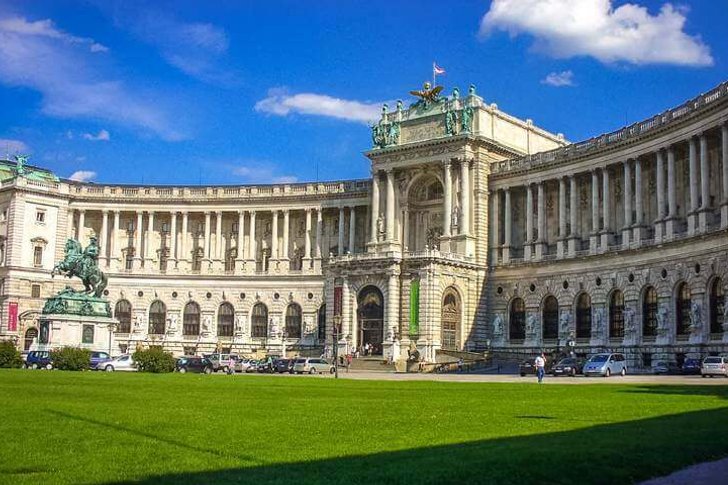
Schönbrunn
The summer residence of the Habsburgs, built in the pompous style of the Austrian Baroque. The palace is surrounded by a huge landscape park, especially picturesque in spring and early summer. It grows hundreds of species of flowers, shrubs, trees and exotic plants. 40 rooms and halls of the residence are open for visiting, where you can look at the imperial bedrooms, reception rooms, ballrooms.

Gazebo
Another pearl of the 18th century palace baroque style. The palace complex is often referred to as the "Viennese Versailles" for its beauty. Belvedere belonged to the brilliant Austrian commander Prince Eugene of Savoy. Now the halls of the Lower and Upper Belvedere houses a museum complex of medieval art, the Baroque period and impressive collections of paintings from different eras.

Vienna Opera
Symbol of the Vienna Musical, one of the best opera houses in Europe. Placido Domingo, Luciano Pavarotti, Maria Callas and other great performers performed here at different times. Regular productions include works by Strauss, Mozart, Verdi and Ravel. The modern building of the theater appeared in the 19th century, it was immediately headed by Gustav Mahler. At the opening in 1965, Don Giovanni by W. A. Mozart was performed for the audience.
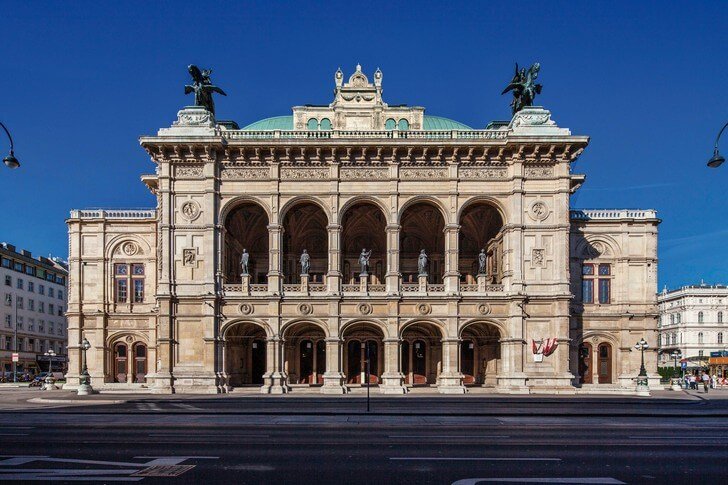
Vienna Philharmonic
A well-known concert venue, one of the centers of the musical life of the Austrian capital. The Vienna Philharmonic Orchestra and guest bands perform here, many come on tour from other countries. The Philharmonic is popular with guests of Vienna, as musicians in costumes of the Mozart era often perform here and create a unique surroundings and atmosphere of the 18th century.
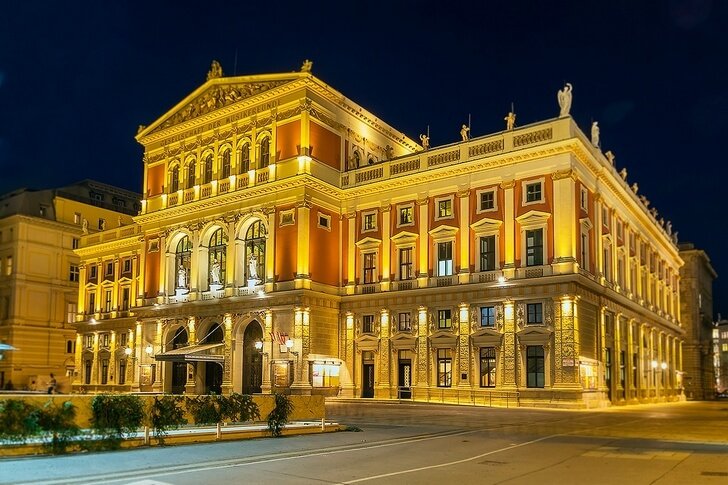
Burgtheater
Royal Dramatic Theater of Austria. It appeared at the behest of Empress Maria Theresa in the first half of the 18th century. The building is located near the Hofburg and City Hall. The theater was destroyed by bombing during the Second World War, and it took a lot of time and effort to restore it. Today, the Burgtheater is a well-known and popular venue hosting the world's leading theater groups.
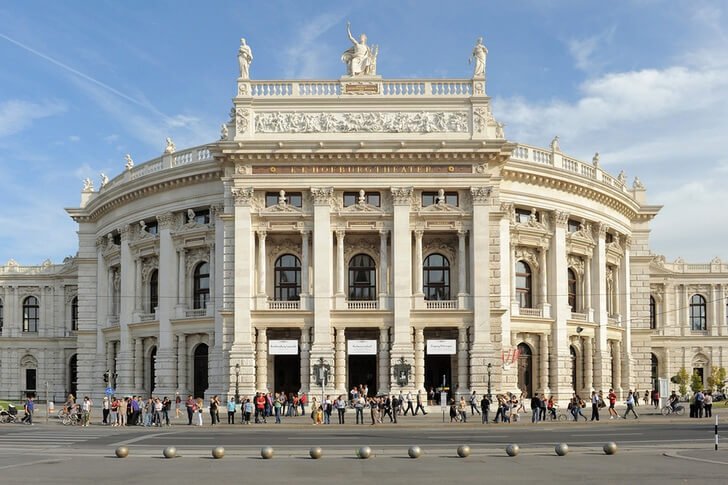
Vienna City Hall
The building is located in the Inner City (the central district of Vienna) and serves for administrative purposes. The town hall houses the parliament - the Landtag, the municipal assembly, and also houses the mayor's residence. During the construction, the model of the Brussels City Hall in the neo-Gothic style was used. The interior decoration is more like a palace with rich decorations, huge crystal chandeliers and large halls.

Austrian parliament building
An architectural complex with elements of neoclassical, Byzantine and antique style, designed and built by the architect Baron Hansen in the 19th century. He specifically created such a project to remind future parliamentarians of the birthplace of democracy, Greece. Since the collapse of the Austro-Hungarian Empire in 1918, the national and federal councils have been sitting here, before that the Chamber of Deputies was located.

Liechtenstein Palace
The palace-museum, which in the past belonged to one of the oldest and noble European families - the princes of Liechtenstein. The building houses a large private collection of art objects, which the family began to collect from the 16th century. Among the exhibits are the works of Flemish painters, paintings of the Renaissance, Romanticism, jewelry, antique furniture, collections of weapons, household items from different times.
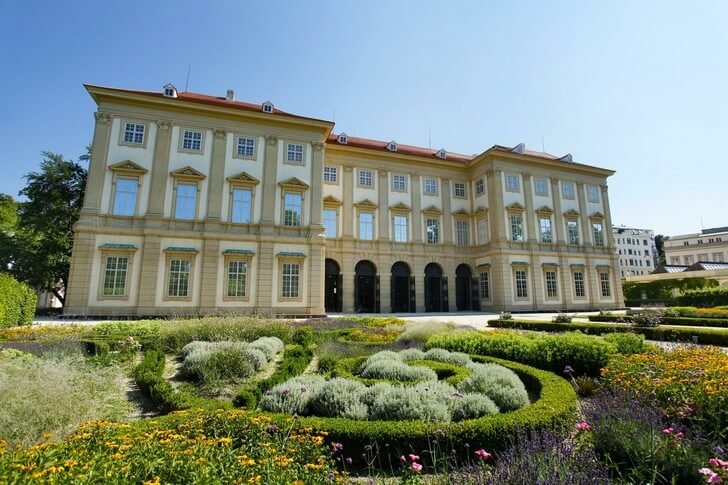
Liechtenstein Castle
The castle is the family home of the Liechtenstein family. This magnificent example of medieval architecture is located in the Vienna Woods. The history of the castle began in the 12th century along with the history of the family. Over the centuries, the building was repeatedly destroyed during the fighting. After the bombings of World War II, it was restored at the expense of the townspeople, and Liechtenstein leased the castle to the Vienna municipality.

Kreuzenstein Castle
Kreuzenstein is one of the most visited Austrian castles, located a few kilometers from Vienna. The fortress arose on the site of an ancient Roman fortification, in the 13th century it passed into the possession of the reigning Habsburgs. After being destroyed in the 17th century as a result of the Swedish War, the castle lay in ruins for almost two centuries. Only in the 19th century, the Wilczek family bought the land and reconstructed the castle in its original form.
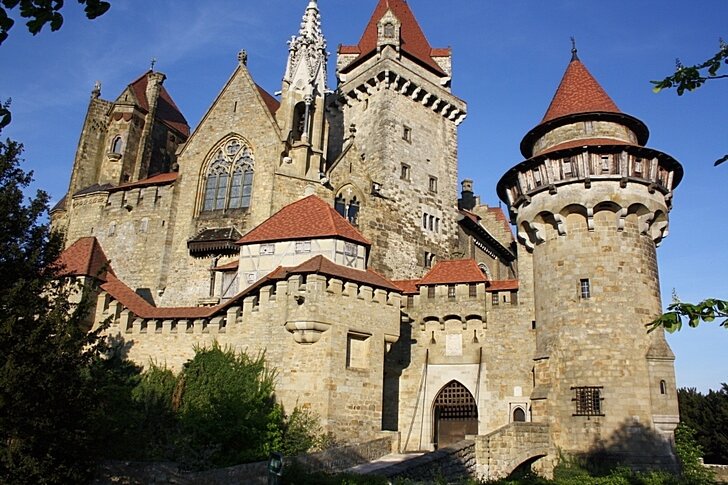
St. Stephen's Cathedral
Gothic cathedral of the XIV century with magnificent interior decoration, a true symbol of the Austrian capital. The temple went through many reconstructions, by 1523 it acquired the form in which it has survived to this day. From the observation deck on one of the towers offers a breathtaking view of Vienna. In the cathedral catacombs are the tombs of E. Savoy, Frederick III, Rudolf IV and other representatives of the royal dynasty.

Church Karlskirche
Baroque Catholic church with elements of Rococo, Byzantine, Greek and even Arabic style, built by order of Emperor Charles VI in the first half of the 18th century. The reason for the construction was the terrible plague that hit Vienna in 1713. The emperor promised the Lord that he would build a church in honor of his patron Saint Charles if the city got rid of the terrible infection.

Church Votivkirche
A striking monument of neo-Gothic architecture of the XIX century. It has the most typical elements for this style: openwork decorative patterns that create a “flying” airy image, lancet window spans and arches, high spiers of the main towers. The temple is built of white sandstone, so the building often requires reconstruction. The church appeared as a token of gratitude to God from Emperor Franz Joseph.

St. Peter's Church
One of the oldest churches in the capital, built under Emperor Leopold I. The dome of the temple was designed in the image of the dome of St. Peter's Cathedral in the Vatican. According to some historical sources, in 792 there was a church founded under Charlemagne. The first direct mention of the temple dates back to the 12th century. The building in the Romanesque style burned down in the 17th century, ten years later the modern church of St. Peter was erected in its place.
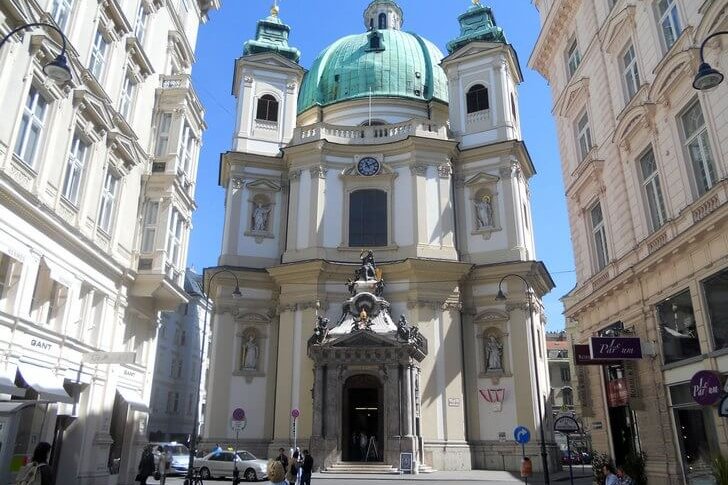
Mozart House Museum
The apartment in which the great composer lived with his family in the period 1784-1787. Here, one of his main creations, the opera The Marriage of Figaro, was born. The museum was opened on the 150th anniversary of the death of Mozart and reconstructed 100 years later. Only the stove, window openings and doors remained from the original furnishings. In the museum you can see various items that belonged to the composer's family.

Albertina Gallery
An outstanding collection of paintings, initiated by Duke Albert (Albrecht). The gallery has several dozen halls displaying works by Renoir, Monet, Picasso, Rubens, Raphael, Michelangelo, Rembrandt. In addition to the art exhibition in the "Albertina" there is a library with a reading room. A restaurant and a souvenir shop are open for tourists, where you can buy art history books.

Sigmund Freud Museum
Museum organized in the house of the founder of psychoanalysis Z. Freud. The expositions tell about the activities and researches of the scientist. Visitors can look at the psychoanalyst's waiting room, office, waiting room. The museum also contains an extensive library of three hundred volumes devoted to the study of psychoanalysis. Freud and his family lived in this house until the German occupation in 1938.
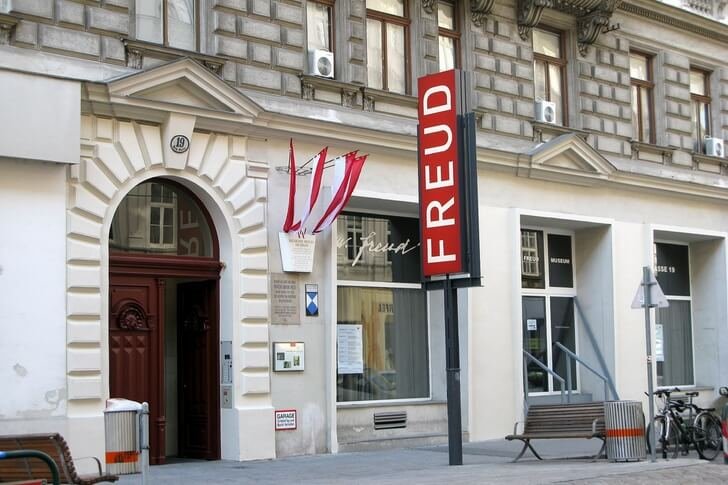
Kunsthistorisches Museum and Natural History Museum
Two museums in the style of the Italian Renaissance, located close to each other. Both buildings were designed by the masters Baron von Hasenauer and Gottfried Semper. Between the museums there is a picturesque landscape square with small fountains, alleys and topiary trees. The interior decoration is also luxurious, the interiors are reminiscent of the imperial palace.
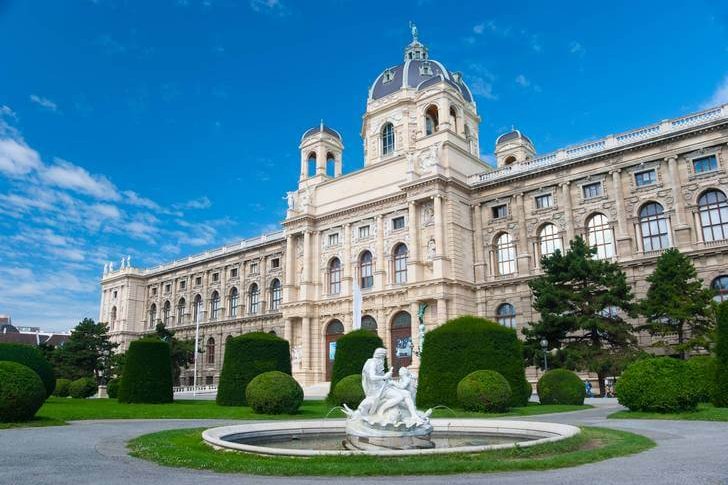
Leopold Museum
Located in the Museum Quarter of the capital. The expositions are dedicated to the work of contemporary Austrian artists. The gallery exhibits works by Oskar Kokoschka, Egon Schiele, Gustav Klimt. The basis of the museum was a private collection of the Leopold family. In 1994, the Austrian government bought more than 5,000 paintings from them, established a museum, and Rudolf Leopold was appointed its director for life.

Danube tower
Observation tower on the territory of the Danube Park with a height of 252 meters, the highest point of the Austrian capital. From the summit in clear weather, visibility reaches 80 km. You can climb on two high-speed elevators, or by breaking the stairs of 779 steps. The tower has two restaurants on a rotating platform. In summer, bungee jumpers organize buckle competitions from the observation deck.
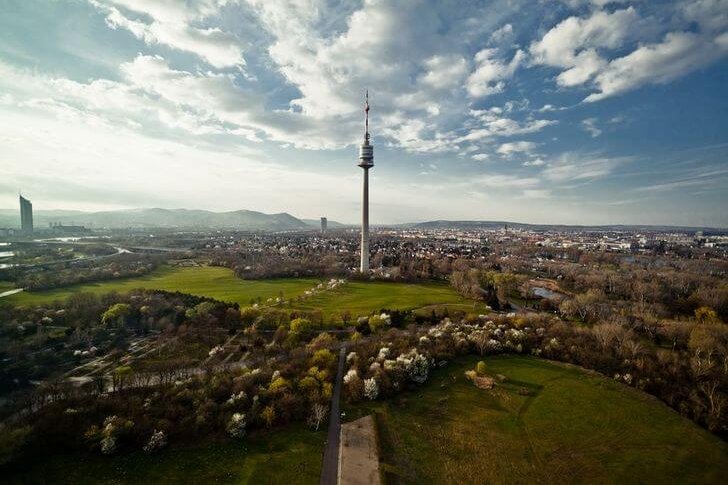
tower of lunatics
The building appeared in the XVIII century. and served as a shelter for people with mental disabilities. This is one of the oldest madhouses in Europe. In 1786, the sinister tower was given over to the museum of pathological anatomy. The exhibits of the museum are human organs and parts of the body (as well as the whole body), subjected to mutations as a result of diseases or genetic pathologies, stored in alcohol solutions. The exposition is part of the Museum of Natural History.
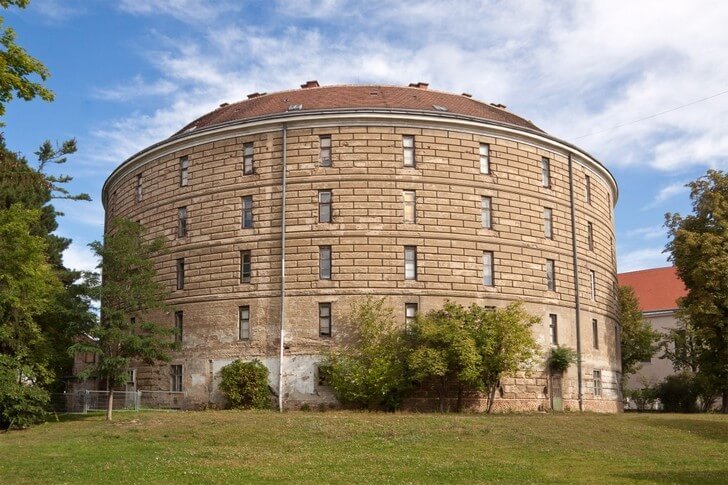
Hundertwasser House
The home of the avant-garde artist and architect Friedensreich Hundertwasser with an interesting and unusual design. The eccentric creator himself called it an "ecological home." On the one hand, the architecture of the building is somewhat reminiscent of the famous creations of A. Gaudi: smooth asymmetrical shapes, bright colors, balconies decorated in the Art Nouveau style. And on the other hand - the fabulous home of the hobbits from The Lord of the Rings.

Vienna Woods
A picturesque natural area and a well-maintained resort area, located on the spurs of the Alps in the vicinity of Vienna. The forest has been recognized by UNESCO as a Biosphere Reserve due to its unique ecosystem. Valuable beech and oak trees grow here. Many folk legends and legends are associated with the Vienna Woods, united under the general name "Tales of the Vienna Woods".

Vienna city park
Public park, laid out in the 19th century. by order of Emperor Franz Joseph. A popular place for walking locals and relaxing from the bustle of the city. On the paths there are busts and statues of famous personalities: Schubert, Strauss, Lehar, Bruckner. Concerts are constantly held in the park, dance floors are arranged, cafes and restaurants are open. The territory is decorated with flower meadows, curly bushes and fountains.
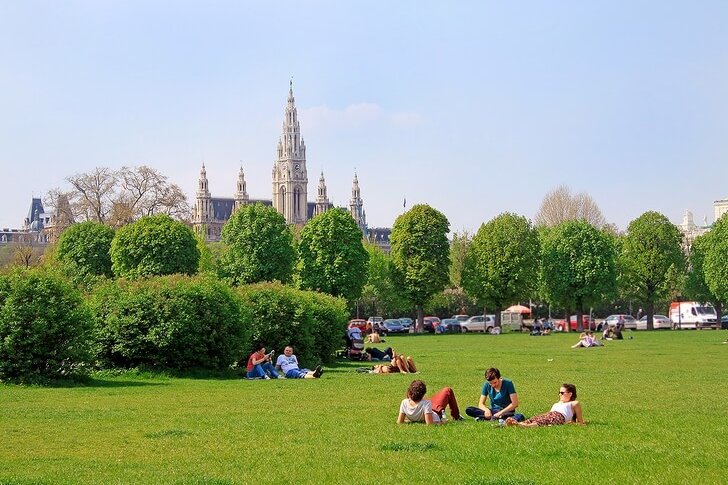
Ringstrasse street
The street encircling the central part of Vienna, one of the main city arteries. The Ringstrasse was built on the site of the old city walls. The most famous sights of the capital are located along the boulevard: the Hofburg complex, the Vienna Opera House, the Parliament building, museums, parks, monuments. There are busy transport routes. The street stretches for 5.3 km. in length.

Prater park
It is located on the left bank of the Danube. Until the 18th century, imperial hunting grounds were located here, then, at the behest of the royal family, a park was laid out - coffee houses, carousels, and pastry shops appeared. People were entertained by clowns and street performers. Since the 19th century, the Vienna Fair has been held on the territory. The park has a Ferris wheel, recognized as one of the oldest in Europe. The Prater is a favorite holiday destination for Viennese families with children.

Cafe Sacher
The world-famous Viennese coffee house, located on the first floor of the five-star hotel of the same name. The cafe is open to everyone and has fairly affordable prices. Here you can drink magnificent Viennese melange and taste the famous Austrian Sacher cake, the recipe of which is still kept in strict confidence (only the cafe's confectioners own it).
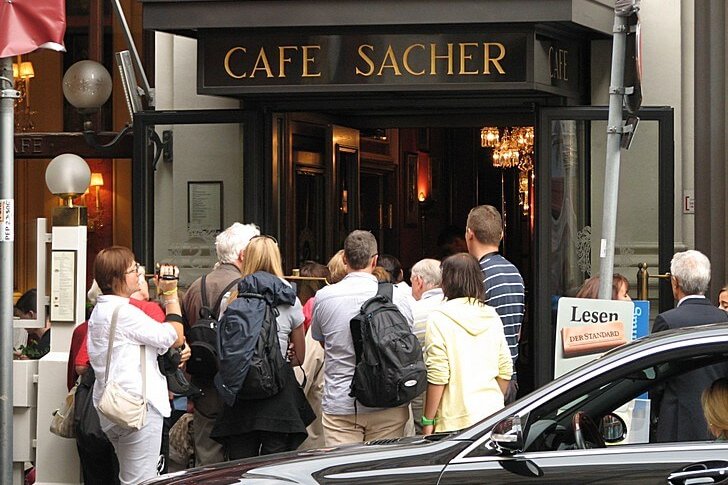
House of the sea
Aquarium and terrarium in one area, where a wide variety of marine life and amphibians are represented. It contains jellyfish and rays, rare species of fish, sharks, turtles and snakes, crocodiles, spiders and lizards. About 10,000 animals live in aquariums and tanks. The House of the Sea is located in the building of a 45-meter tower, on top of which there is an observation deck.

Schönbrunn Zoo
The zoo appeared in the 18th century at the request of Emperor Franz Stefan (the monarch had a craving for natural sciences). Nowadays, the zoo is recognized as one of the best in the world; several hundred species live here. Special pride - giant pandas, a rare endangered species of animals. Newly appeared panda cubs are sent to China at the age of 2 years, because. this country is the owner of all pandas by treaty.
